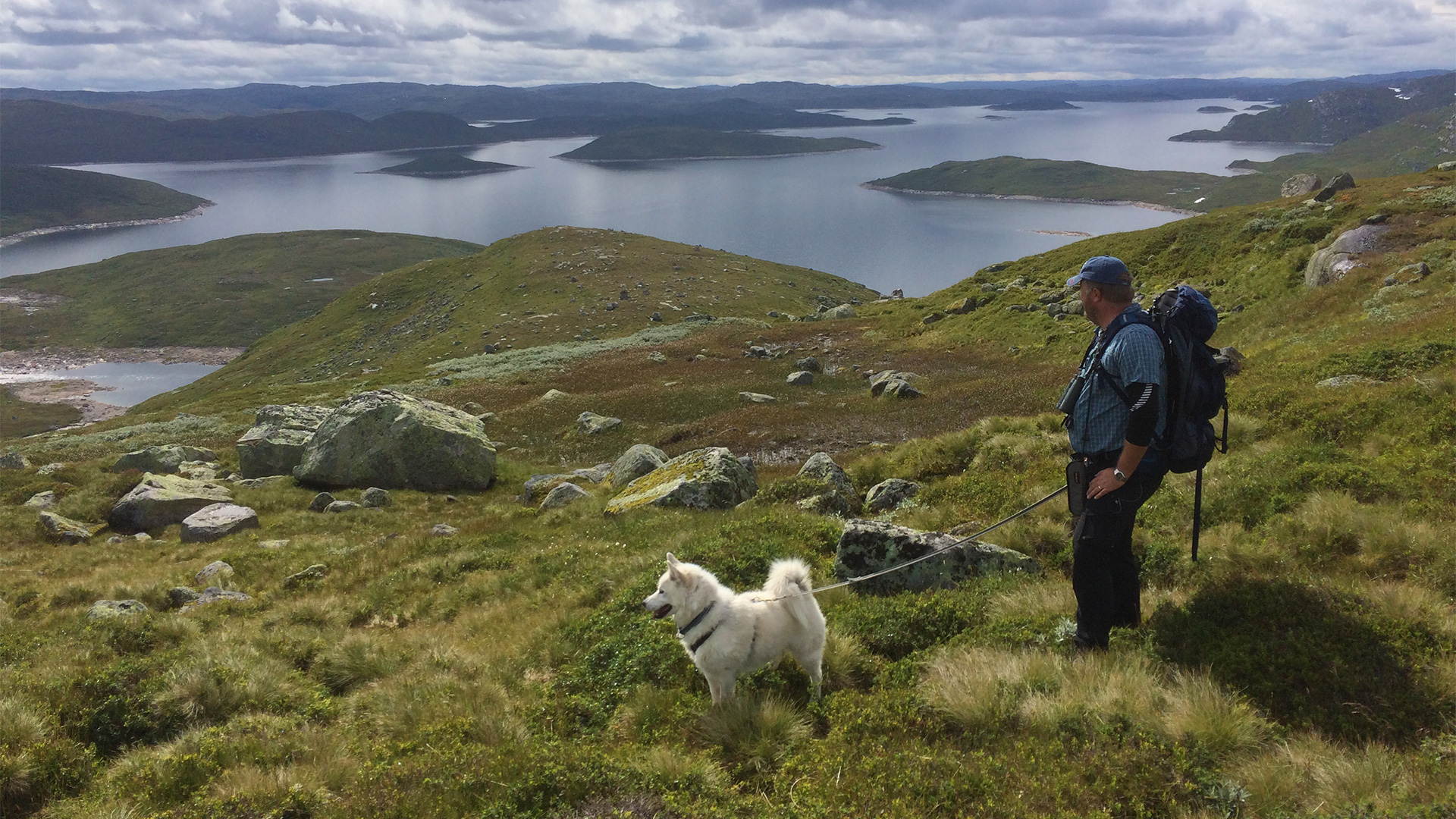
Background for protection and threats
SVR was protected in 2000 after a conservation process in which various forms of protection and areas were proposed. There are many reasons behind the protection, all of which are linked to safeguarding an interconnected, distinctive and beautiful natural area that consists of untouched mountains, hills and mountain forest areas. The area is home to a distinctive flora and fauna, mountain farming areas, grazing grounds and cultural monuments. A key part of the protection objective is to safeguard an interconnected habitat for the southernmost wild reindeer population in Europe. Threats to the local botanical heritage values are primarily related to areas becoming overgrown, such as places where mountain arnica and lanceleaf grapefern grow. In many places, grazing sheep help keep the mountain birch trees in check so they don’t spread further up the hills. At the same time, the amount of grazing in some places is so intense that it affects plant biodiversity. Much of the cultural landscape in the protected area is found in the vicinity of mountain farms and overhanging rock shelters. Overgrown areas of birch and juniper are especially found below and just above the tree line. There are many sites in the protected area where birds of prey and owls nest. These include species such as golden eagles, gyrfalcons, rough-legged buzzards and eagle owls. Disturbances that occur around the nesting sites during spring can be particularly critical, and there is a risk that the birds will stop breeding. There are some threats to the function Setesdal Vesthei-Ryfylkeheiane Protected Landscape has as a habitat for wild reindeer. An obvious threat are all the encroachments that have taken place in connection with hydropower development. The reservoirs have limited the reindeer migration routes during the summer and autumn, and construction roads, power plant installations and power lines bring traffic and disturbances into the already limited migration corridors. A barrier effect is created by the two county roads that are open to regular motorized traffic in the summer and autumn. This is particularly noticeable along the Brokke-Suleskardvegen road just before it closes in the autumn and immediately after it opens in the spring. It is also likely that the traffic on the construction road to Urevatn lake prevents the reindeer from migrating through this area. Visitors hiking along tourist trails and motorized traffic in connection with transport to mountain farms, farming cabins and tourist cabins can also cause occasional disturbances. Encroachments and disturbances are most likely the reason why the wild reindeer’s use of important grazing areas has been limited, and why the exchange of animals between the north and south of the area has stopped in recent years.

Wild reindeer
Out of consideration for the wild reindeer, some places have special restrictions for visitors. From 15 April to 20 May, all traffic/travel in the migratory zone is prohibited. From 25 April to 31 May, all traffic/travel in the calving areas is prohibited. The prohibition does not apply if you are following a road or a waymarked trail.
Plant life and wildlife
Flora
If you stand on the highest peaks in SVR and look out across the landscape, the horizon is mainly dominated by bare mountains, marshland, lakes, willow thickets and scree. Most of the bedrock is lime-deficient, and at first glance the flora can seem to be both drab and meagre. However, if you take a closer look, there is a lot of exciting flora in these hills. A total of 335 different species of flowering plants and ferns have been recorded in this area. In the northern parts of Bykle, on the border with Vinje, shale fields provide good growing conditions for more nutrient-demanding plants. Mountain avens are one of these.

Imagine that you go on a hike from one of the farms in the hills up to the highest peaks in the area. At the beginning of the trip, you will mainly see mountain birches and a few mountain ash and aspen trees. In some places that have good access to nutrients and water you will see tall perennials. After leaving the mountain birch forests, you will find some hillsides that are more lush with tall forbs and alpine sow-thistle. Alpine sow-thistle is a tall plant with purple flowers. Its juicy stalks taste good in spring and are edible. European goldenrod and wood cranesbill are also common plants at this altitude. Mountain arnica is a rare species and likes to grow in areas where haymaking and grazing have taken place. Cloudberries are often found in the transition between mountain birch forests and the bare mountains. During the early summer, the cloudberry marshes are covered in white blossom. There is a lot to look forward to here if the frost or rainy weather doesn’t destroy the white flowers before they have time to set fruit.
You then reach the bare mountains where many of us go on a hike and step on small, anonymous plants without knowing it. These plants are often the ones that make up the vast majority of the vegetation in the area. Common species here are various plants belonging to the heather family such as blueberries, lingonberries, alpine azalea, alpine bearberries and crowberries. There are also many types of rushes and sedges. Some of these include wavy hair-grass, common cottongrass and matgrass. Matgrass is a late-growing, stiff grass with little nutritional content for grazing animals. Matgrass grows in tussocks and is often found in abandoned mountain meadows or other places where there have been a lot of grazing animals. Common butterwort isn’t a true alpine plant but can also be found in the area. It has violet flowers and is often found growing on relatively dry marshland. Common butterwort is a carnivorous plant. Small insects get stuck in the sticky mucus on its leaves and provide the plant with an extra supply of nutrients. Dwarf birch, a smaller relative of the mountain birch, is also common at this altitude.
Snow can be found on some of the high hills well into the summer. These are places where you can often find dwarf willow, our smallest species of tree. The perennial herb called the purple gentian is a common plant found many places in the protected area. It is especially prevalent in the northern parts of Bykle. There are long traditions of using purple gentian in both folk medicine and conventional medicine right up to the present. It has been used to treat intestinal worms and digestion problems. The root contains a number of bitter substances that can be easily tasted when chewed. Finally, you find yourself standing among the peaks in the highest parts of the area, approximately 1100 – 1200 meters above sea level. There are a lot of bare mountains but also a number of plants that manage to hold on tight. Some of these plants look like grayish-green grass, such as curved wood-rush. Another plant that follows you all the way to the top is wavy meadow-grass. This plant grows in small, blueish-green tussocks. Unlike some other types of grass, wavy meadow-grass is very soft to the touch. Alpine lady’s-mantle and highland rush are also plants that are common at this altitude.
Finally, we have to mention lichen, many species of which can be found in these hills. Lichen consists of a fungus and an alga that live together in symbiosis. The fungus provides water and minerals, while the alga provides nutrients through photosynthesis. It is common to categorize the different species of lichen according to the way they grow; crustose, foliose and fructicose lichens. Crinkled snow lichen, star-tipped cup lichen, shrubby cup lichen and reindeer cup lichen are fructicose lichens. These all serve as important winter fodder for the reindeer.
Fauna
Setesdal Vesthei Ryfylkeheiane Protected Landscape is also habitat for a number of birds and mammals. Some of them live here permanently, while others wander through the area from time to time. Reindeer are one of the most important animals that can be found here. SVR forms the core area of the southernmost wild reindeer population in Norway and Europe. As nomads of the mountains, they migrate over large areas searching for the best grazing grounds and their familiar calving grounds. They often use the same migratory routes between the various areas. SVR is located relatively close to the coast, and this affects the wild reindeer’s living conditions. There are not many good winter grazing grounds consisting of large fields of lichen. Some years, the winter grazing grounds become frozen when mild weather is followed by freezing temperatures. Read more about wild reindeer
Moose and red deer have become increasingly common to see in SVR. Especially in late summer and into autumn, they find good grazing conditions at altitudes of 700 – 800 meters. There are also many places where they migrate between the valleys when moving between winter grazing grounds and summer grazing grounds. None of the four large predators live permanently in the protected area. Wolves and wolverines roam through the area from time to time. The lynx is more common but prefers to stay in rugged areas of forest down towards the villages where there is better access to breeding grounds and prey (roe deer). The red fox is one of the smaller predators that is common in the area. Arctic foxes are sometimes found here but they often face too much competition from the red foxes. Weasels and stoats are common here, but pine martens are mostly found close to the forested areas on the outskirts of the protected area.
Beavers, the construction workers of the forest, can be found in many of the small watercourses up to 700 – 800 meters above sea level. Beavers make use of mountain birches and sometimes aspen trees to build their dams and lodges. The beaver is a nocturnal animal and is usually seen late in the evening or early in the morning. The most common rodents here are lemmings, short-tailed field voles and bank voles, and some years there are extreme numbers of these tiny animals. Small rodents are important food for birds of prey, and they have a better chance of raising their chicks during years where there are huge numbers of small rodents.
Fish
Trout disappeared from many of the mountain lakes due to acid rain. Today, the precipitation is less acidic, and many lakes and watercourses have been chalked and restocked with fish. Up until the 2000s, restocking the watercourses with brook trout was common. Today, trout are the most common fish found in the lakes.
Birds
The hillsides would seem empty without any birds. The European golden plover is a faithful companion for many hikers. Its rather melancholy and simple song makes it an easy bird to recognize. Bluethroats, northern wheatears and meadow pipits are the most common smaller birds that visitors might see. Visitors will often find European dippers and waders such as redshanks and wood sandpipers in and around the local watercourses. Common scoters and black-throated divers occasionally breed and nest in the protected area. Willow ptarmigans are common throughout the entire mountainous area despite a decline in numbers in recent years. During the spring, male ptarmigans cause a lot of fuss when trying to secure the best nesting sites.
You might see rock ptarmigan if you venture to the top of the highest and most barren peaks in the area. The rock ptarmigan is a slightly smaller and grayer relative of the willow ptarmigan. Both rock ptarmigan and willow ptarmigan change the color of their plumage to white in winter.
There are a number of birds of prey and owls that live in the protected area. Maybe you will see a golden eagle soaring high up with its outstretched wings, or a gyrfalcon diving after a ptarmigan on the ground. Rough-legged buzzards also nest in some parts of the protected area. Owls are often active at night and don’t really show themselves during the day. Short-eared owls are common here, while the eagle owl, Norway’s largest owl, only nests here occasionally. All birds of prey are easily disturbed by human activity, and successful breeding often occurs during years where there are large numbers of small rodents.
Finally, we have to mention the garbage collectors of the mountains. Hooded crows and ravens often turn up in search of anything that looks edible. They have an absolute feast if they find the carcasses of any large animals that have died.
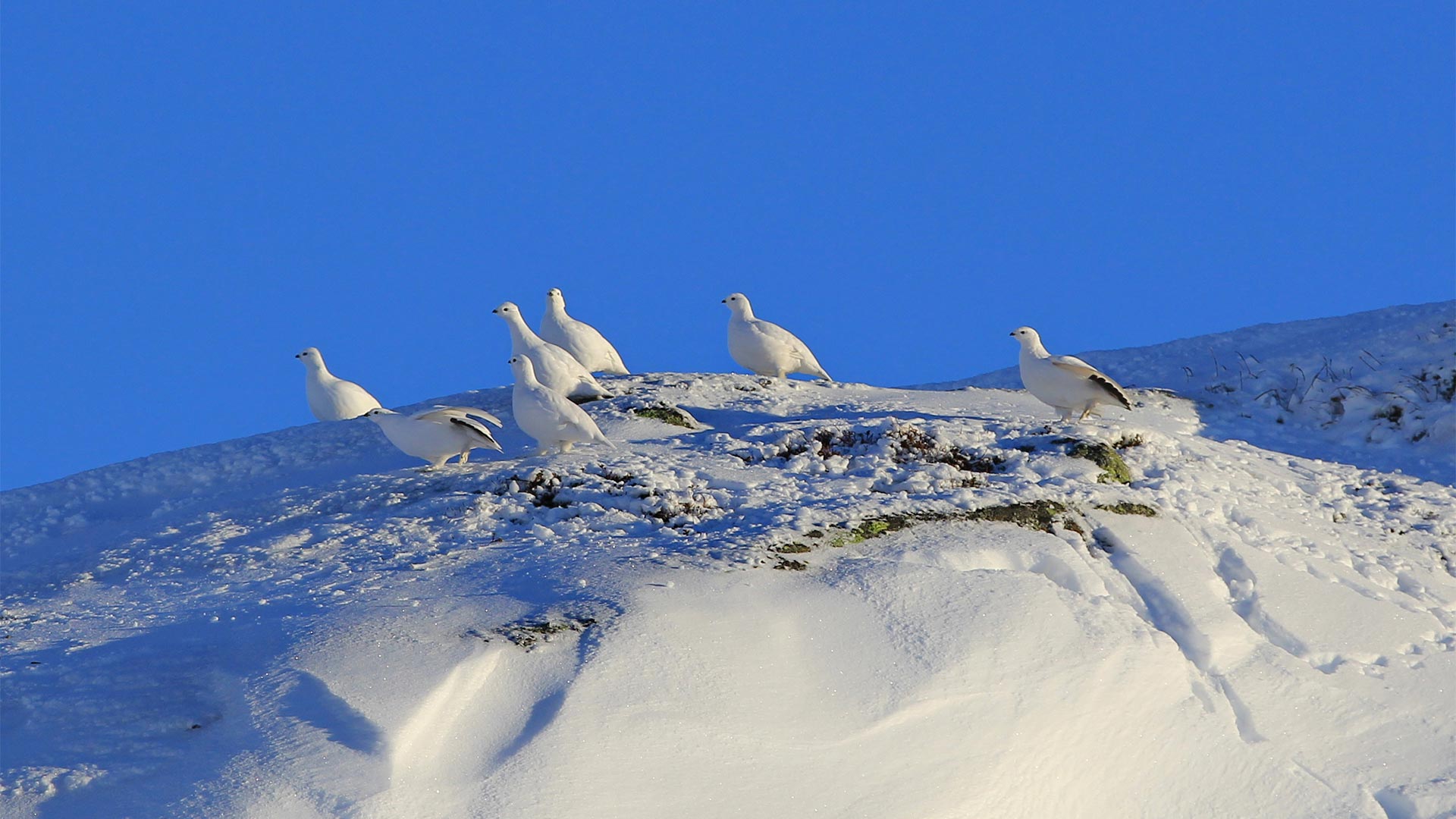
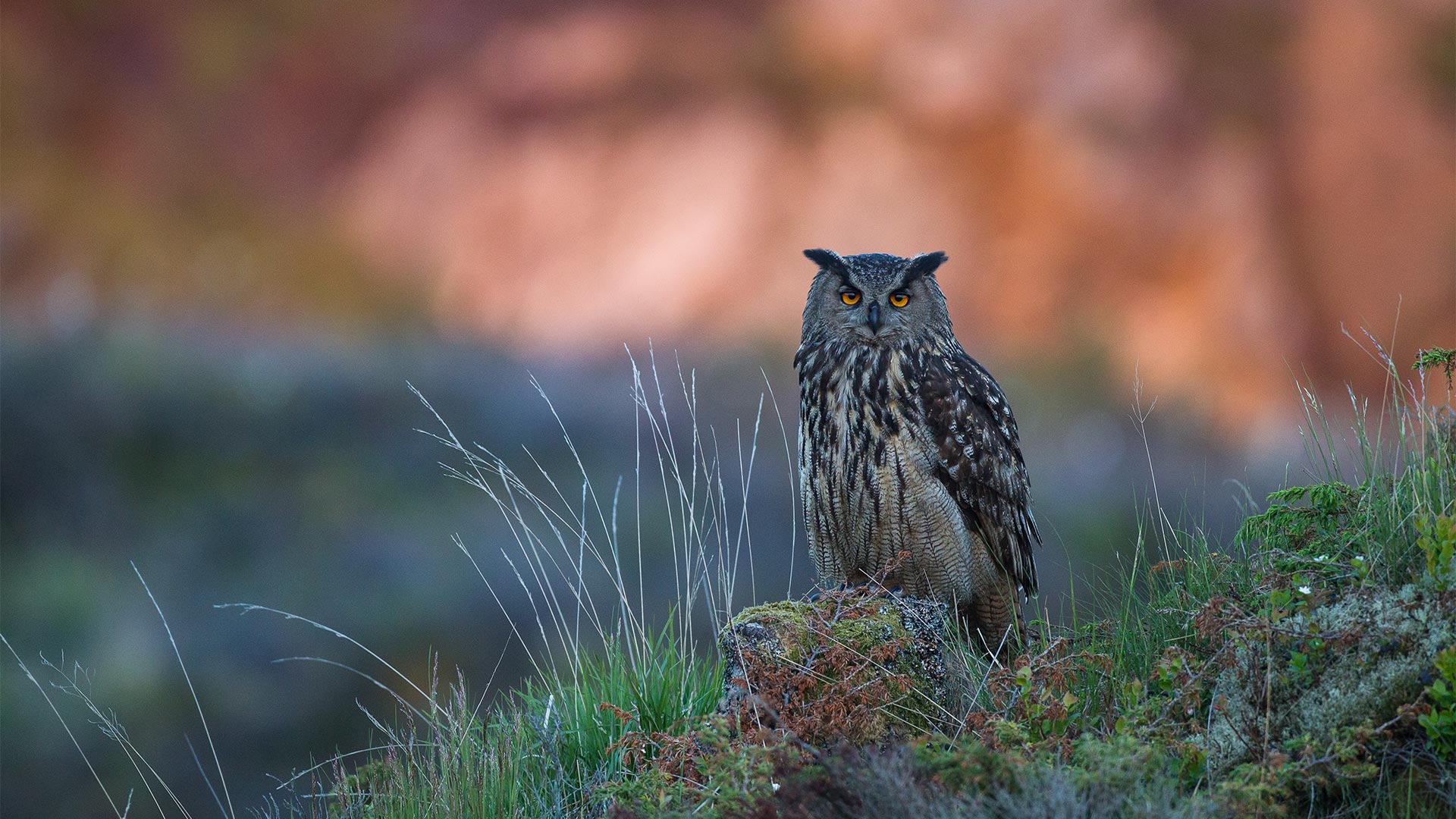
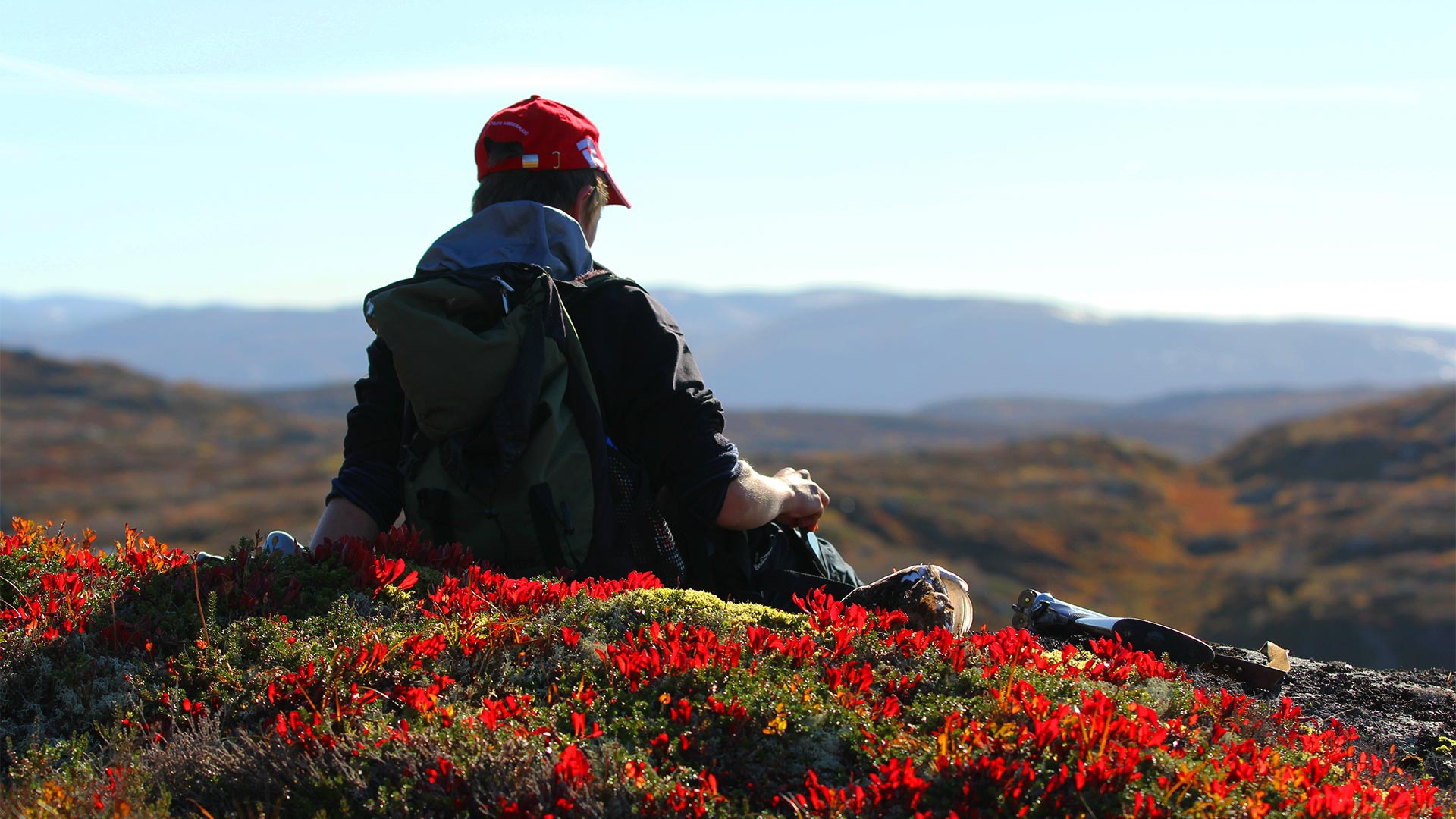
Past use of the area
The protected landscape is rich in cultural monuments left behind from summer mountain farming, haymaking and farming traffic from the 1700s onwards. Pytten Mountain Farm in Bygland is the only farm that is still in operation. There was a permanent settlement here until 1950. The farm has special heritage values related to both the buildings and the surrounding cultural landscape.
If you travel even further back in time, you will find automatically protected cultural monuments in the form of Stone Age settlements, as well pitfall traps and archers’ hides connected to reindeer hunting. The areas around Storhedder and Gyvatn lake in Bykle have many great examples of these cultural monuments.
Until well into the 20th century, there was traffic over the hills that connected the valleys and the villages. The many roads that run from east to west are evidence of this. Skinnvegen was an important trade road that ran between Åmli Farm in Valle and Lysefjorden in Sandnes. The name Skinnvegen originates from the time when taxes were paid in skins and leather. The farmers had to travel to Stavanger to deliver what they owed.
At the beginning of the 20th century, Thorvald Meyer Heiberg from Oslo bought large mountain areas in both Setesdal and Ryfylke. He constructed around 30 hunting cabins in the local mountains where he rented out areas for reindeer hunting and ptarmigan hunting to rich Europeans. Heiberg owned property in the area until 1943, when it was then sold to Quisling and the Nasjonal Samling. He gave the mountainous area the Norse name of Njardarheim. The Norwegian state took over the property in 1945 and it is currently managed by Statskog. Several of the old hunting cabins can still be found in the mountains, such as Bossfjellhytta cabin to the west of Rosskreppfjorden and Sigurdsheller next to Øyarvatn lake in Sirdal.
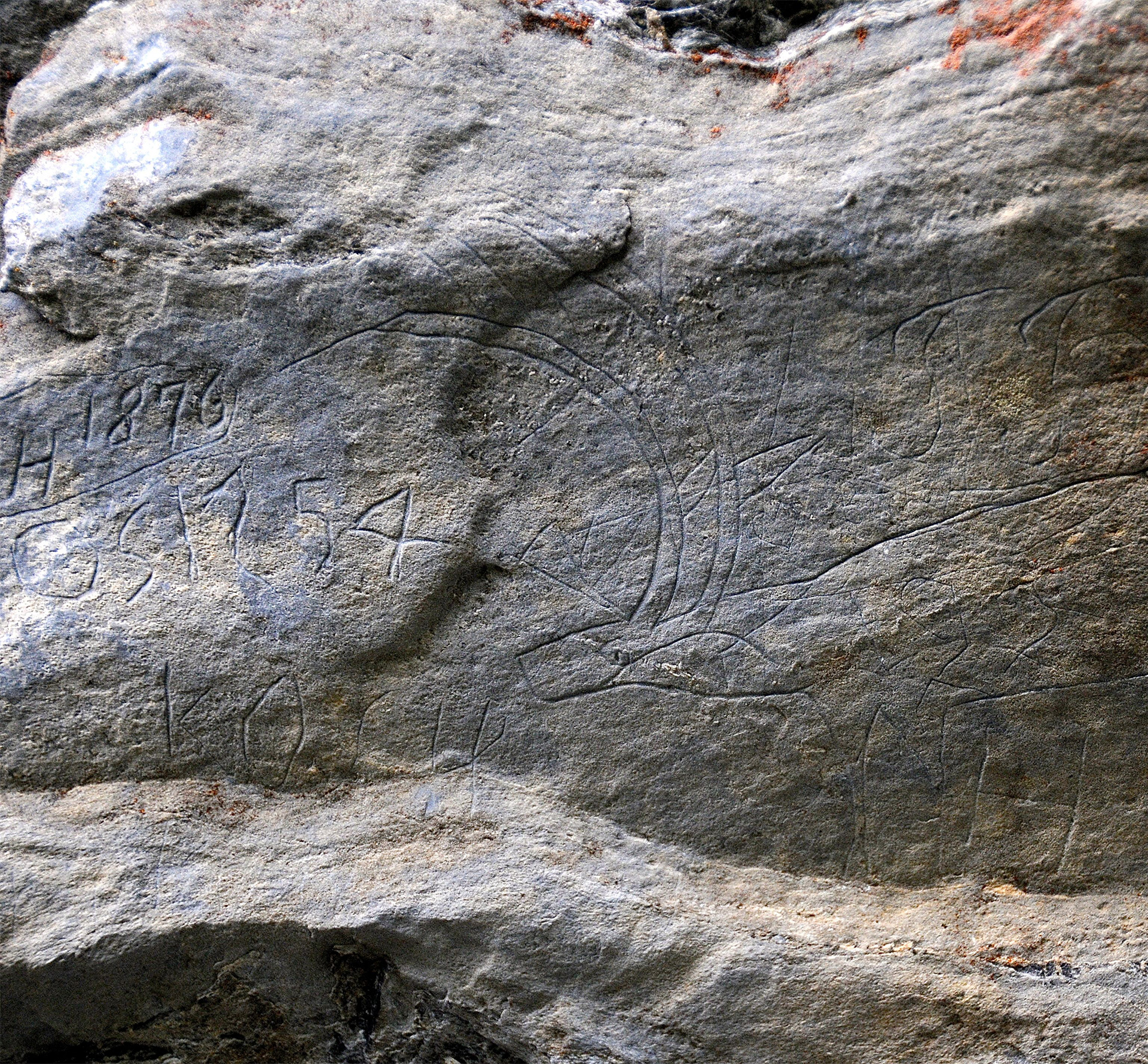
Current use
The protected landscape has been strongly affected by encroachments from hydropower development in the form of roads, dams, reservoirs and power lines. The Brokke – Suleskard road is open in the summer and passes through the protected area. The road was originally built as a construction road from Suleskard to Rosskreppfjorden. The road was extended to Brokke in Setesdal at the beginning of the 1990s. Approximately 70,000 vehicles use the road each year. The road is closed during the winter between 1 November and 20 May.
The protected landscape is a particularly important grazing area for sheep. Some sheep come from local farms in the surrounding villages, but most of them come from farms at Jæren in Rogaland.
The protected landscape has always been an important area for big game and small game hunting. Some of the landowners hunt themselves, but there is otherwise a long tradition of renting out areas for ptarmigan hunting and reindeer hunting. Statskog, which is the largest landowner, rents out areas for reindeer hunting and ptarmigan hunting that cover most of the protected landscape. Many lakes and watercourses have now got good stocks of mountain trout, and it is possible to buy fishing licenses for many of the lakes.
Stavanger Trekking Association and the Norwegian Trekking Association-South have a total of 18 tourist cabins in the protected area, and a well-developed trail network that connects them all. The most important approaches are Berg and Hovden in Setesdal, Bortelid and Ljosland in Åseral, Kvinen in Sirdal and Haukeliseter. Many people also choose to start their trip from the Brokke – Suleskard road.
There several large areas of cabins close to the protected landscape. Many of these cabin areas prepare groomed ski trails that lead into the protected area during the winter months.

Sources and further reading
Forvaltningsplan på verneområdestyrets nettstad
Kronprinsregentens resolusjon av 28.4.2000
Verneplan for Setesdal vesthei Ryfylkeheiane
Skjøtselsplan for Setesdal Vesthei Ryfylkeheiane landskapsvernområde i Hægebostad kommune
Kulturminner på Setesdal Vesthei, Ryfylkeheiane og Setesdal Austhei
Flå, H. redaktør. 2008. Vandringer i Setesdal Vesthei. Friluftsforlaget.
